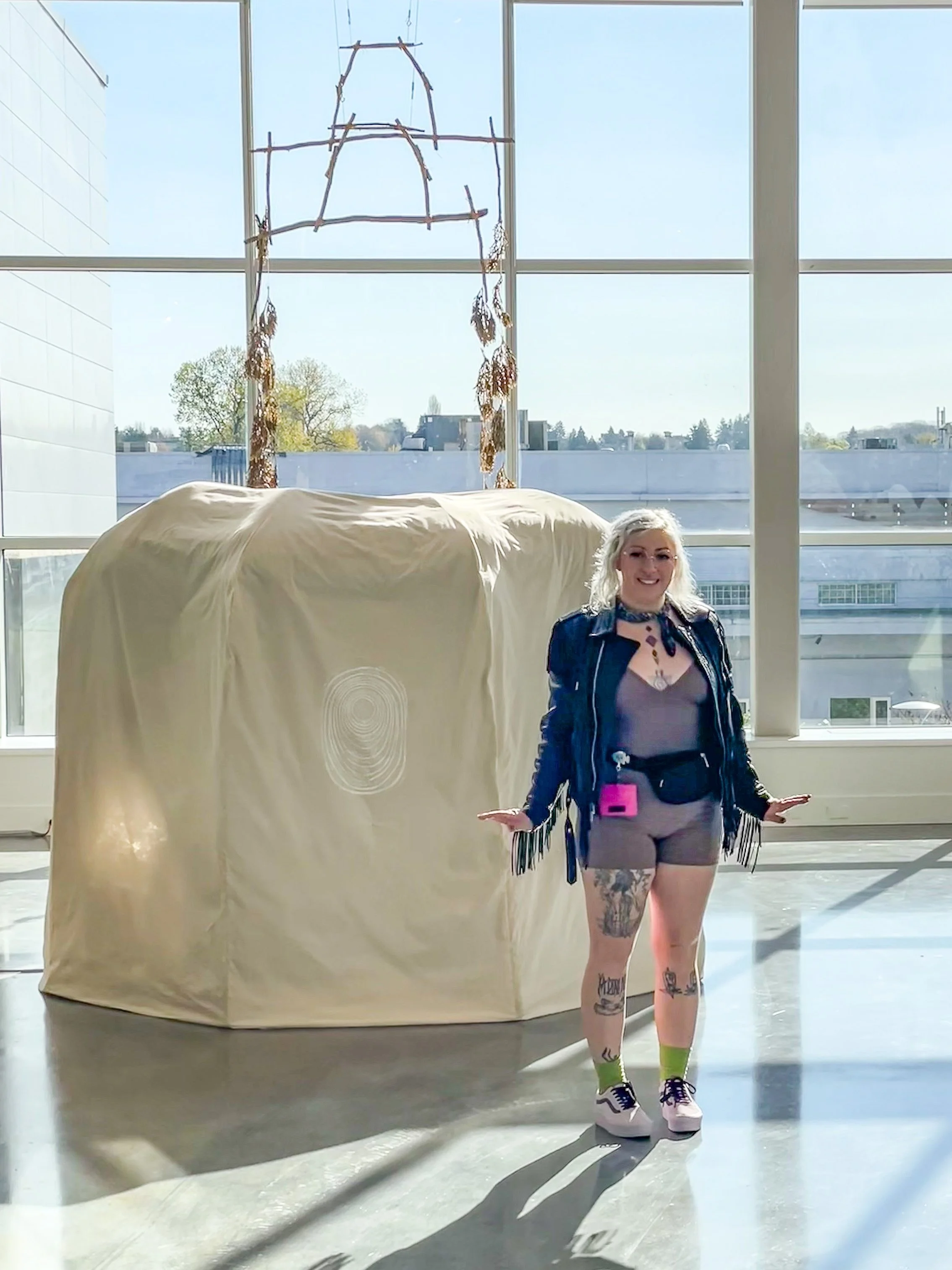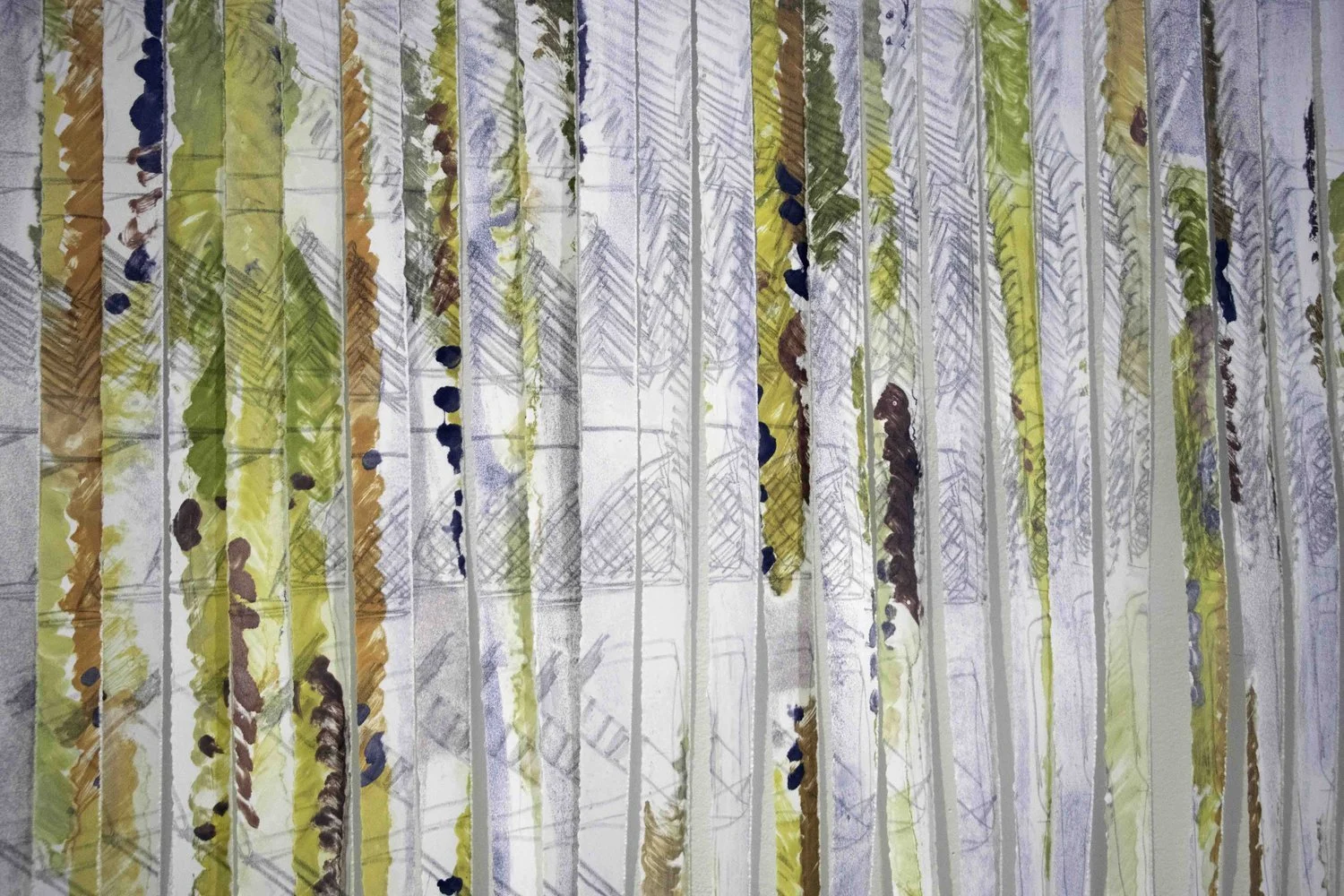Emily Carr University of Art + Design’s The Show features everything from an interdimensional broadcast booth to Ulysses-inspired printmaking
Among more than 250 graduating students showing work, Zoë Laycock and Will Price use novel materials and methods to play between memories and the present day
Zoë Laycock.
Will Price.
Emily Carr University of Art + Design’s The Show runs from May 9 to 23, with an interactive virtual exhibition
PORTALS, BEESWAX, AND Ulysses, oh my!
Those are just some of the ideas behind works by graduating students displaying works at Emily Carr University of Art + Design’s The Show. The annual student art, media and design exhibit features pieces by more than 250 graduating students, including photography, ceramics, sculptures, and more.
One installation, Sonic Portals: QRV, invites folks to enter another dimension through sound while cocooned in a tent structure.
Zoë Laycock, the Anishinaabe Red River Métis artist behind the work, describes it as a nomadic interdimensional broadcast booth.
“The idea is that sound carries information, but it can also help connect us to our ancestors and to places that don't necessarily align with our visual, perceived everyday reality,” Laycock tells Stir in a phone interview.
This “booth” comes in the form of an octagonal muslin tent-like structure, one of its eight sides a door, and the other seven displaying linocut prints of seven different moon phases.
Suspended in front of the door are cedar boughs dipped in beeswax, which Laycock says both protect the space and act as an antenna.
Inside, a collage of sound emanates from a speaker.
A nod to the typical TV timeslot and a tradition of broadcast in her family, the artist has curated a 22-minute soundtrack of recordings from moments she considers sacred or places she has held ceremony: a river running, a banjo playing, and the static of a spirit box.
“That static parallels with the sound of a rattle that belonged to my grandfather, and it also just sounds like water, so it kind of dips in between and bridges these different kinds of technologies that connect me to various spiritual practices and to the beyond,” she says.
The interior walls are lined with felted wool from sheep in Carstairs, Alberta. A few days after Laycock decided to use wool for its acoustic properties, she happened to be researching her patrilineal lineage and found a census listing her great grandfather’s occupation as a wool farmer, previously unbeknownst to her.
“There's these weird kinds of synchronicities that arise in a lot of the things that I do.” she says.
A blue, white, and yellow quilted star blanket hand-sewn by Laycock’s great-grandmother acts as a canopy across the ceiling of the structure.
Zoë Laycock’s Sonic Portals: QRV
Piles of stones sit on both sides of the entryway, representing Laycock’s grandfathers.
“Having them at the doorway looking over what's going on is another layer of comfort or guidance or protection,” Laycock says.
Laycock has laid out a smoked hide gifted to her as a teenager. “I think bringing a sense of smell into work, even if it’s subtle, is really powerful and kind of feeds into the interdimensional and how that experience can be really immersive,” Laycock says.
Near the speaker, there is a copper bowl filled with water and other offerings, both for the time Laycock asks from the audience and unseen forces to engage with the space.
She says she hopes people enter and feel a sense of comfort, or something outside of their everyday.
Will Price, whose printmaking work will be exhibited, also explores the idea of perceived reality and memories.
His piece ineluctable modality of the visible references landscapes, memories growing up in Idaho, and the boundaries between memory and present observation.
“A lot of my print work serves to communicate some kind of mechanical association of the complex incoherence of human thoughts and memory,” Price says, speaking to Stir by phone.
The 12-foot long piece is comprised of inch-wide print strips made using a combination of monoprinting and lithography.
“I went into the project knowing I wanted to create something long and fragmented, I wanted to create something more immersive than I had before,” he says.
First, Price created seven warm-coloured monotype prints vaguely referencing barley fields, based on memories of driving through farmlands with his dad on summer afternoons.
Once those were complete, he began the lithography process, printing a grid of gestural and abstract designs overtop of each print in black ink.
“You draw on it [a stone], then you use different chemical processes to etch the image into the limestone so that you can later wet it and use oil based ink to print off of it,” Price explains. “That wordless conversation with the stone is interesting and important to me.”
Price commonly blends technique like this in his printmaking. Here, the relatively quick monotype print method was contrasted by the slower lithography process, which took a couple of weeks.
Will Price’s ineluctable modality of the visible.
There is also a tension between both print layers, the structured grid laid upon the landscape-esque imagery.
“A big commercial barley farm does not look like anything you would see in nature, so it's another interesting interplay between this open natural space that's still full of plant life, but it’s also manipulated in a very structured and also problematic way by people,” Price says.
Once printed, Price tore the sheets into vertical strips, placing them side-by-side—the first inch from each print together, then the second inch of each lined up, and so forth, effectively extending both images.
The title comes from a Ulysses quote, “Ineluctable modality of the visible: at least that if no more, thought through my eyes.”
Price explains: “Everything in the world that surrounds us exists as it is, but the way that we perceive those things—especially when we're talking about natural systems, nature, and static objects—our perception, cultural and social histories interacting with those things is really what makes them interesting.”
Ulysses by James Joyce was first published in 1922 and was banned in multiple countries, in part for speaking against the Catholic church.
“I am interested in how that intuitive stream-of-consciousness style of writing serves that question and perhaps within its own logic, negates a lot of ideological structures that kind of control our thinking subconsciously,” Price says.
Although over 100 years ago, when Ulysses was first published, decolonization wasn’t top of mind, with a more modern understanding of the literary work, Price says he thinks there’s an argument to be made that the book—and its idea of the “Ineluctable modality of the visible”—was decolonial.
“That quote, to me, brings up this kind of rebellion of colonial thought structure," Price says. ![]()
















